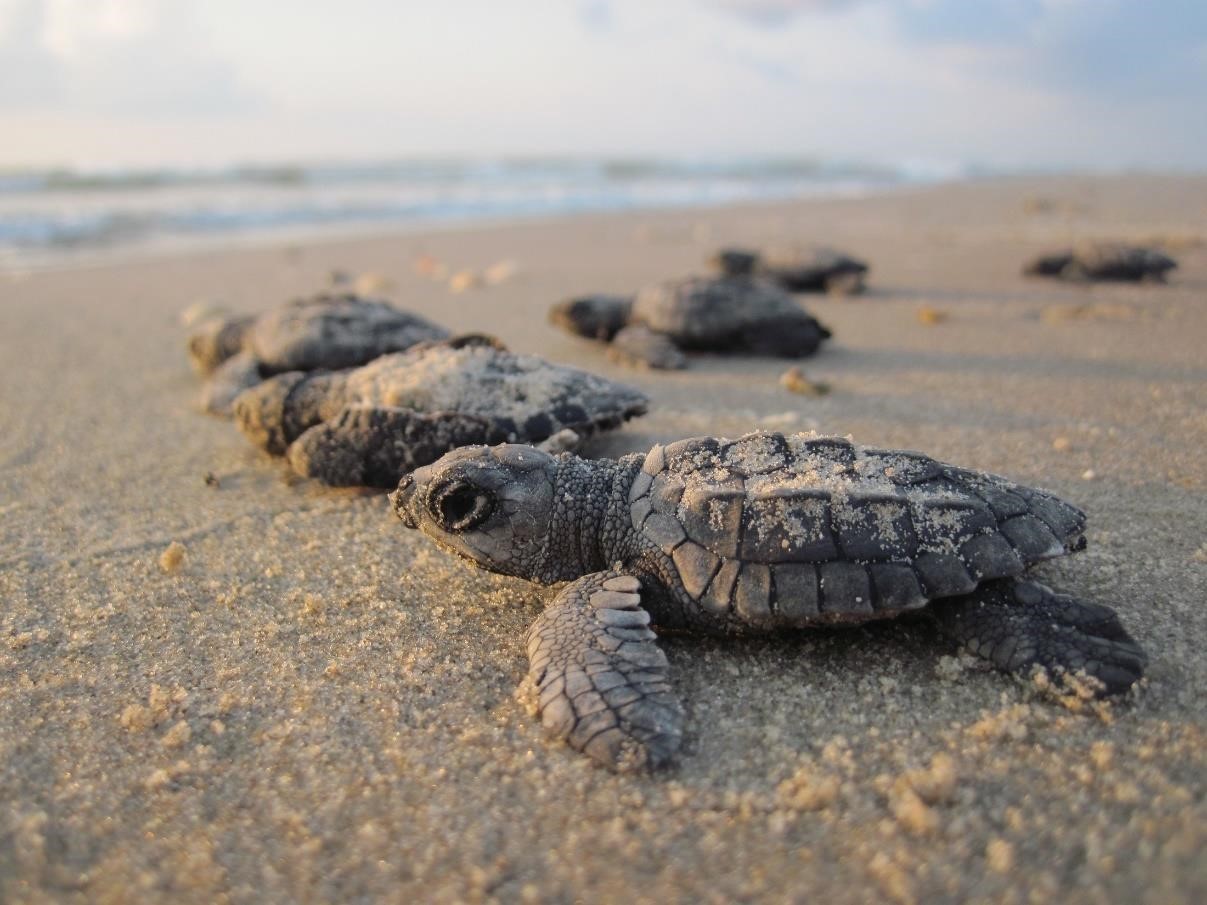In addition to the rising sea level’s impact on critical nesting habitats, a warming climate may also result in severely imbalanced sex ratios in hatchlings, with potentially catastrophic implications for the long-term survival of the species. Conservation biologists across the globe have been studying this unique impact of climate change on sea turtle populations and evaluating possible mitigation strategies to help maintain populations of these creatures.
In this unit, you’ll look at the relationship between climate change and these important marine icons and explore how local actions can help lower the risk.

The Problem
These charismatic keystone species share the “celebrity” status of other highly visible species like polar bears and the American eagle
And, of course, as keystone species, the turtles play important roles in the structure and function of marine ecosystems
Despite a widespread recognition of the importance of these marine creatures, the globe’s seven sea turtle species are all listed on the International Union for Conservation of Nature’s (IUCN) Red List of Threatened Species:
Sea turtles are threatened by a host of human activities, including coastal development, plastics, vessel strikes, bycatch, illegal poaching, habitat destruction, invasive species, and water pollution
In addition to this long list of threats, sea turtles are also uniquely affected by climate change, with direct (imbalanced hatchling sex ratios) and indirect (sea level rise threatening breeding grounds) impacts.
The Role of Climate Change
In a process known as temperature–dependent sex determination (TSD), the temperature of the developing eggs determines if hatchlings will be male or female
Each species has a “pivotal” temperature where the result is an equal proportion of male and female hatchlings.
This combination of longevity and TSD makes species like sea turtles particularly sensitive to climate change.
Solutions
For example, impacts of coastal development can be minimized with strategic habitat protection efforts and nesting exclusion zones, while new technologies can help limit nest predation.
Many governments are enacting various plastic reduction policies to minimize the impacts of plastic pollution.
Some scientists are currently testing the effectiveness of installing artificial shade structures and even nest watering to help lower nest temperature (Hill et al. 2015).
Similarly, as has been done during other environmental crises like the Wide Horizon oil spill in the Gulf of Mexico, nests may be relocated to improve hatching success.
Unit Challenge
The Scenario:
After familiarizing yourself with the Playa Grand ecosystem and consulting the literature on sea turtle nesting site mitigation measures, you’ve chosen to analyze and compare these three options:
Build Your Foundational Knowledge
Shade Structures (Costa Rica):
Totally cool turtles may help save species
Shade and Irrigation (Columbia):
Controlling Sand Temperatures for Sea Turtles in the Choco Region of Colombia
Relocation and Irrigation (Florida):
It’s Gettin’ Hot in Here, So Water All Your Eggs
Solutions
1.3.1 Small Group Guided Worksheets
Additional sources:
Shading sea turtle nests: ‘Nest Shading’ Conservation Technique Must Be Carefully Deployed in Order to Protect Sea Turtle Populations, According to New Study – Drexel News Blog
Irrigating nests: Researchers Are Cooling Down Turtle Nests for Conservation Purposes | Plants And Animals (labroots.com)
Relocating nests: Relocating a Sea Turtle Nest – Ocean Pancake